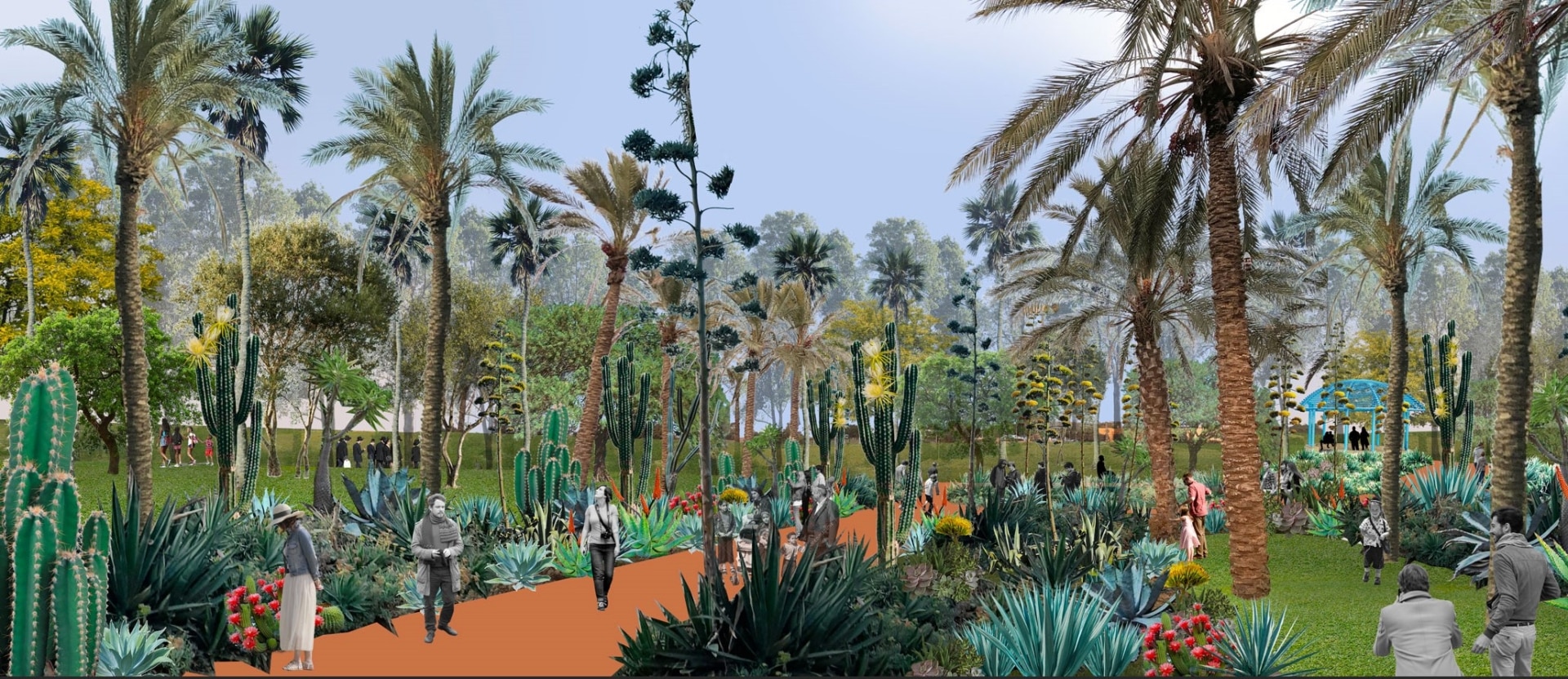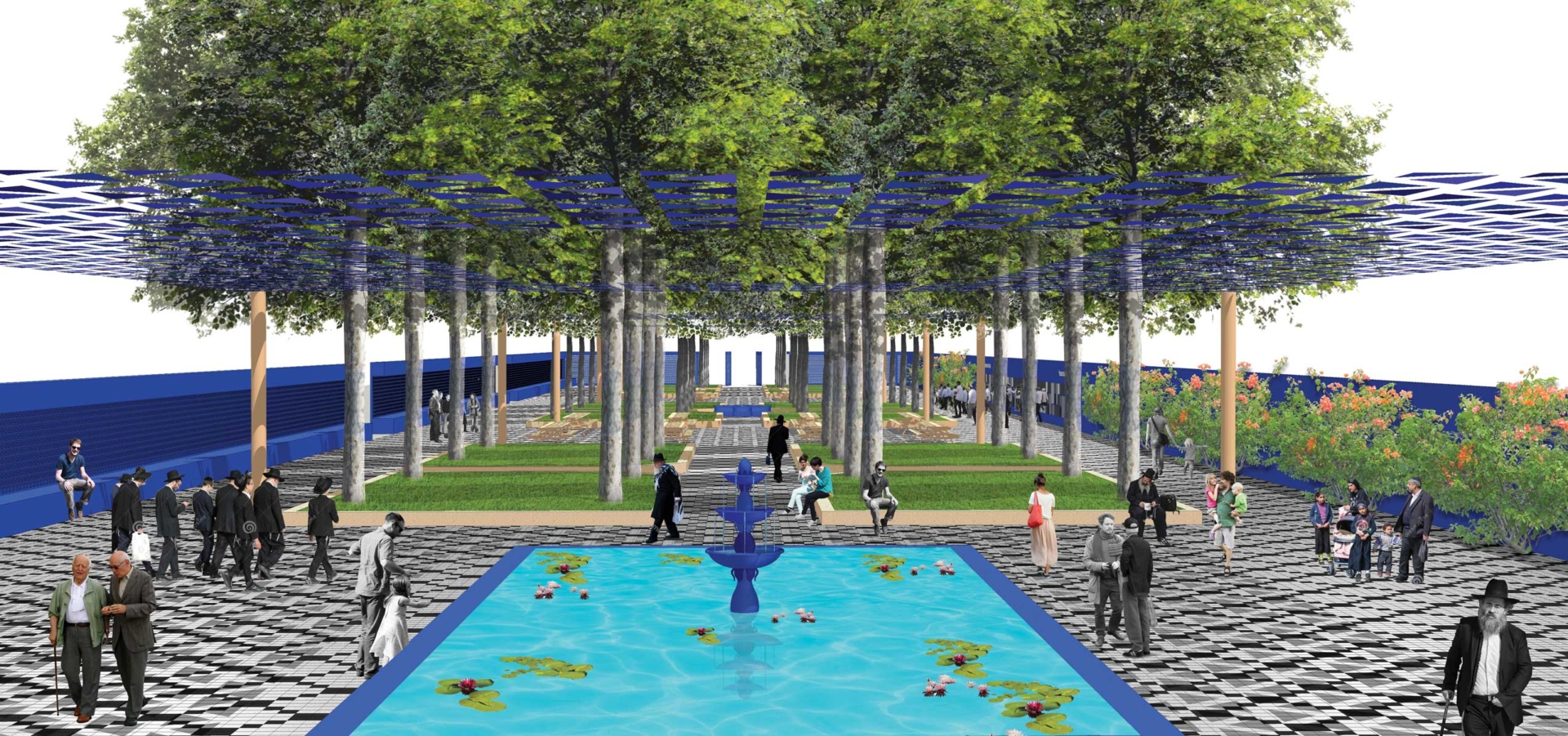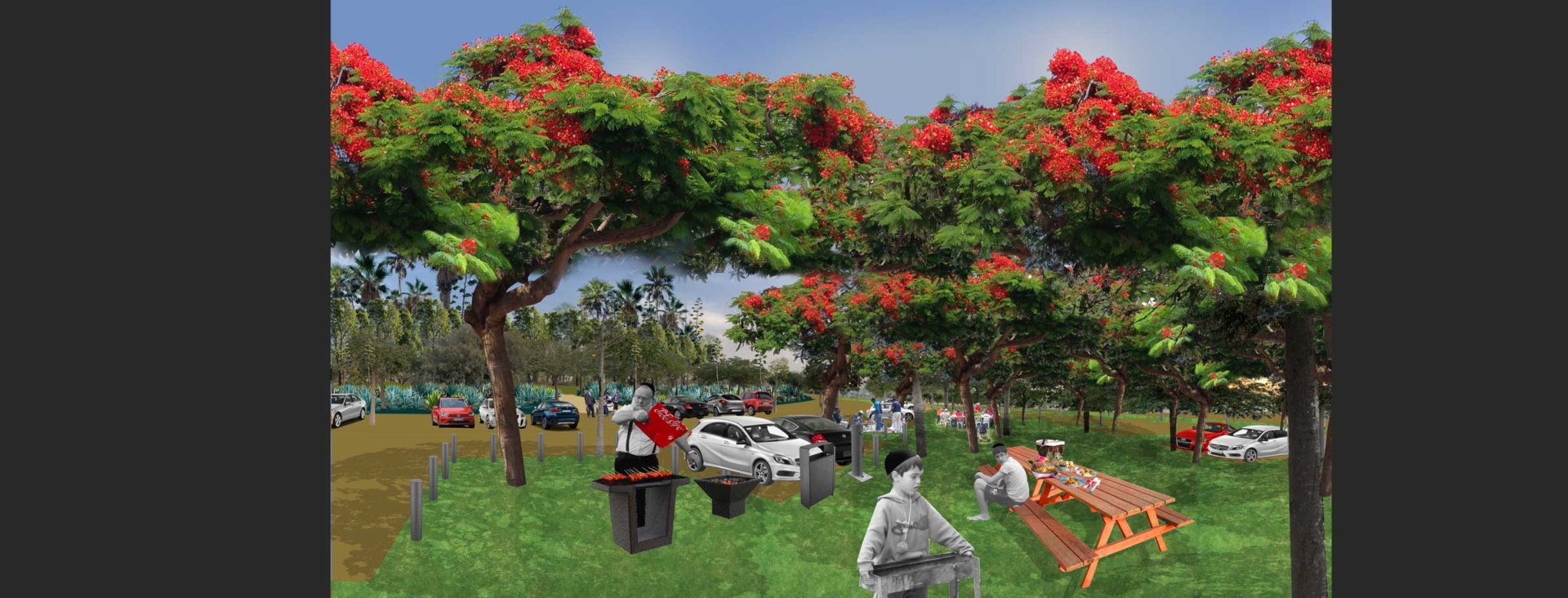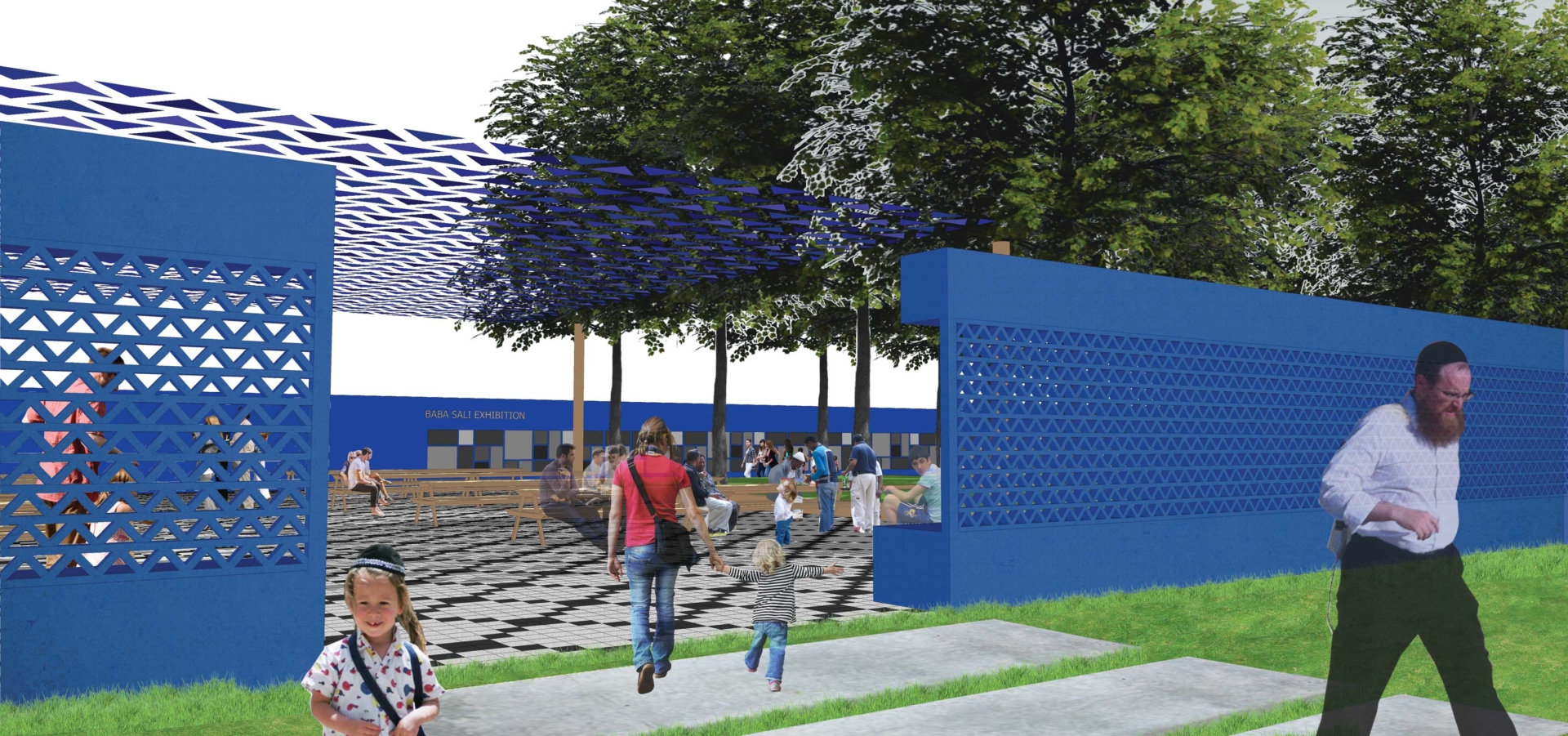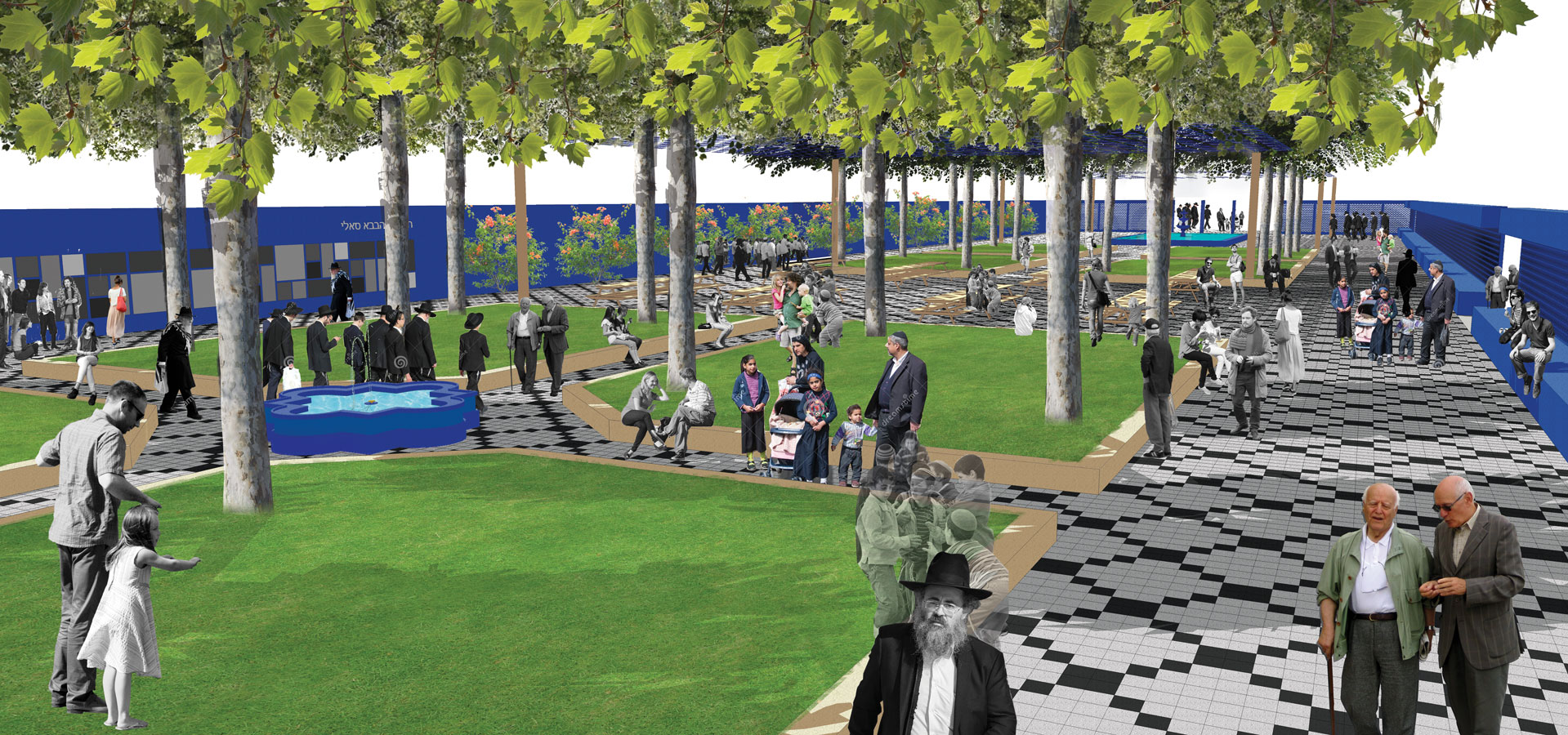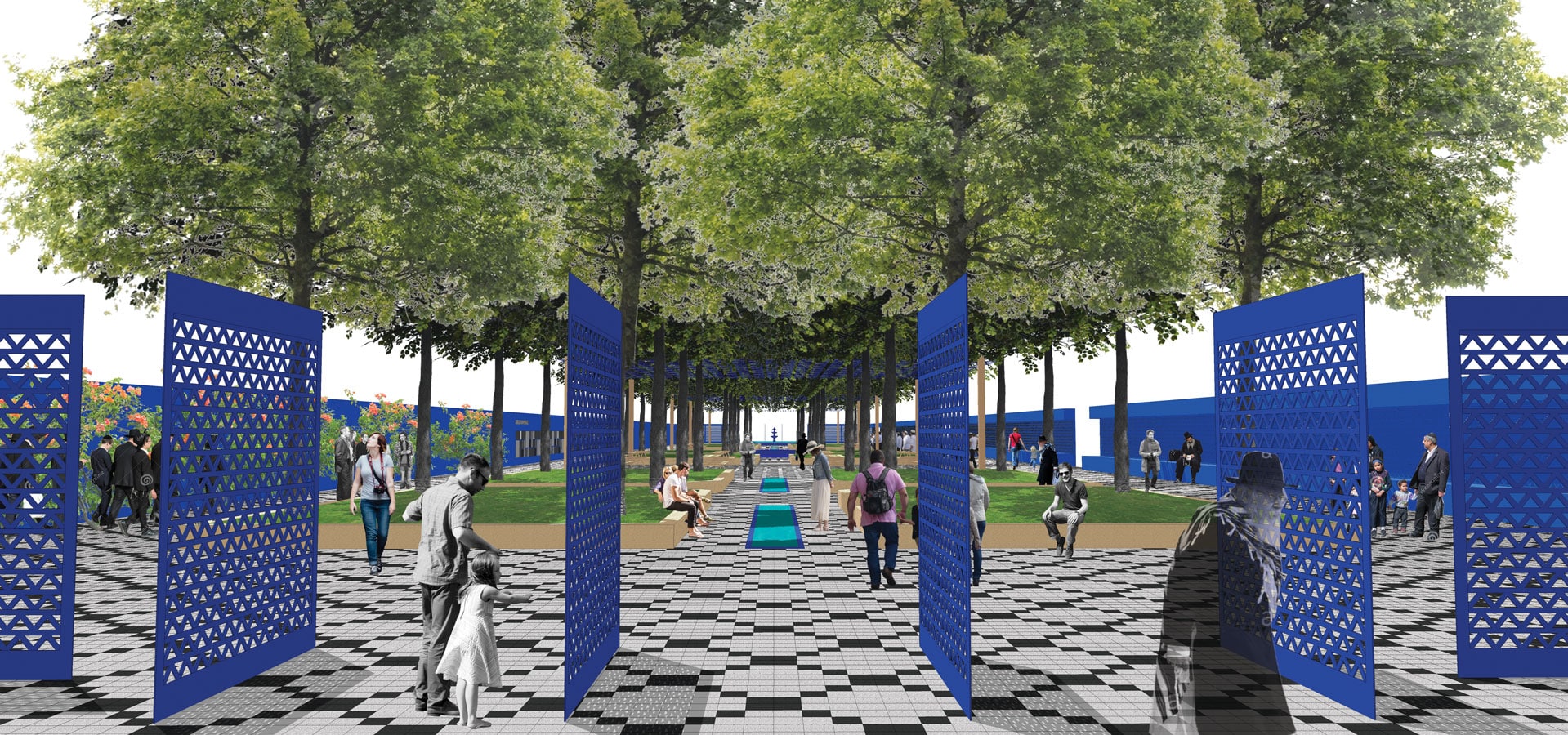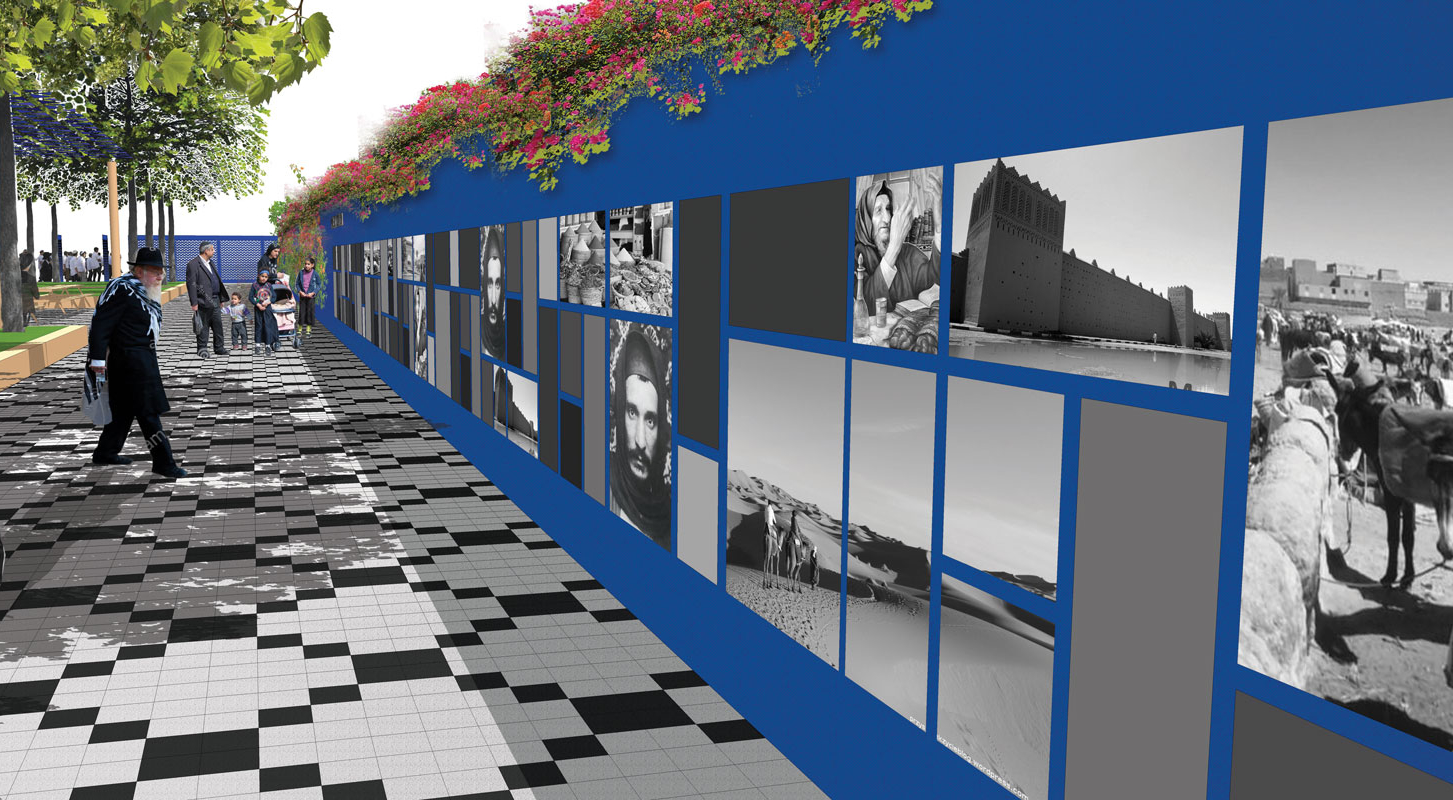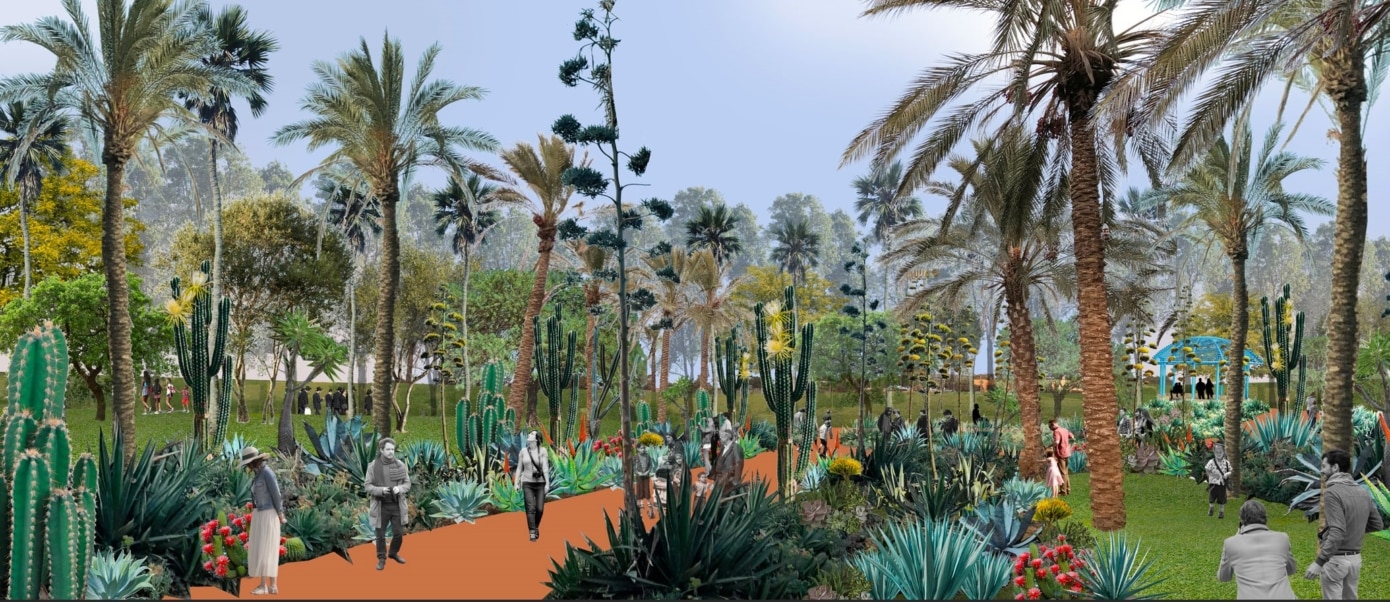
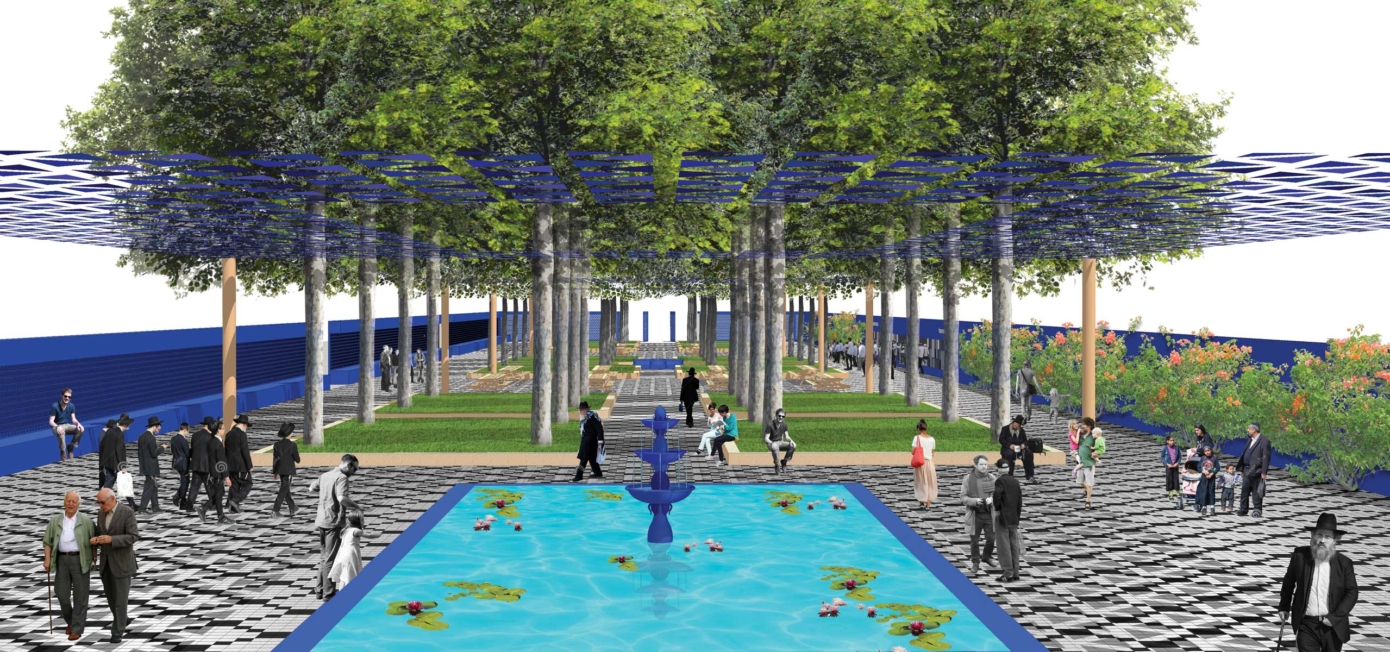
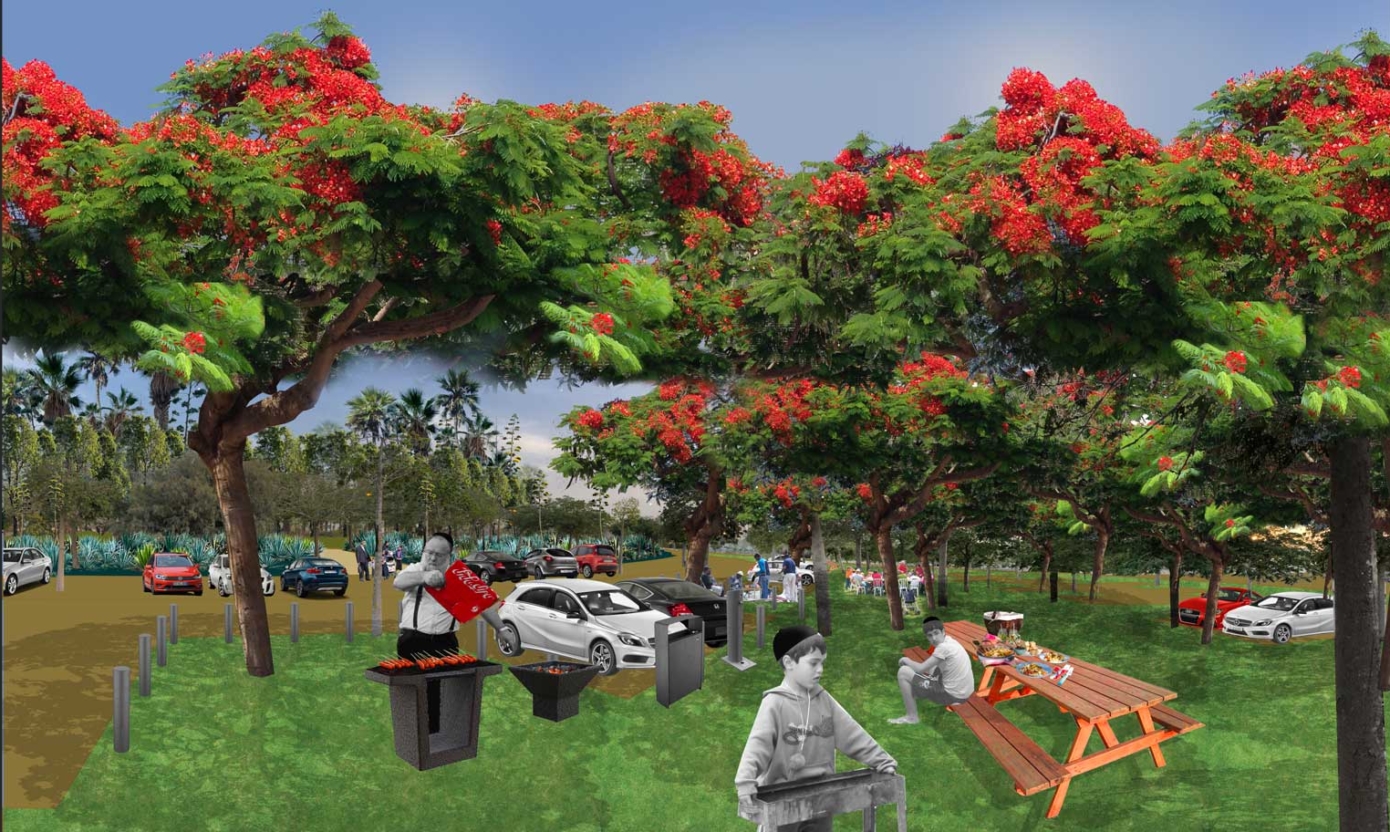
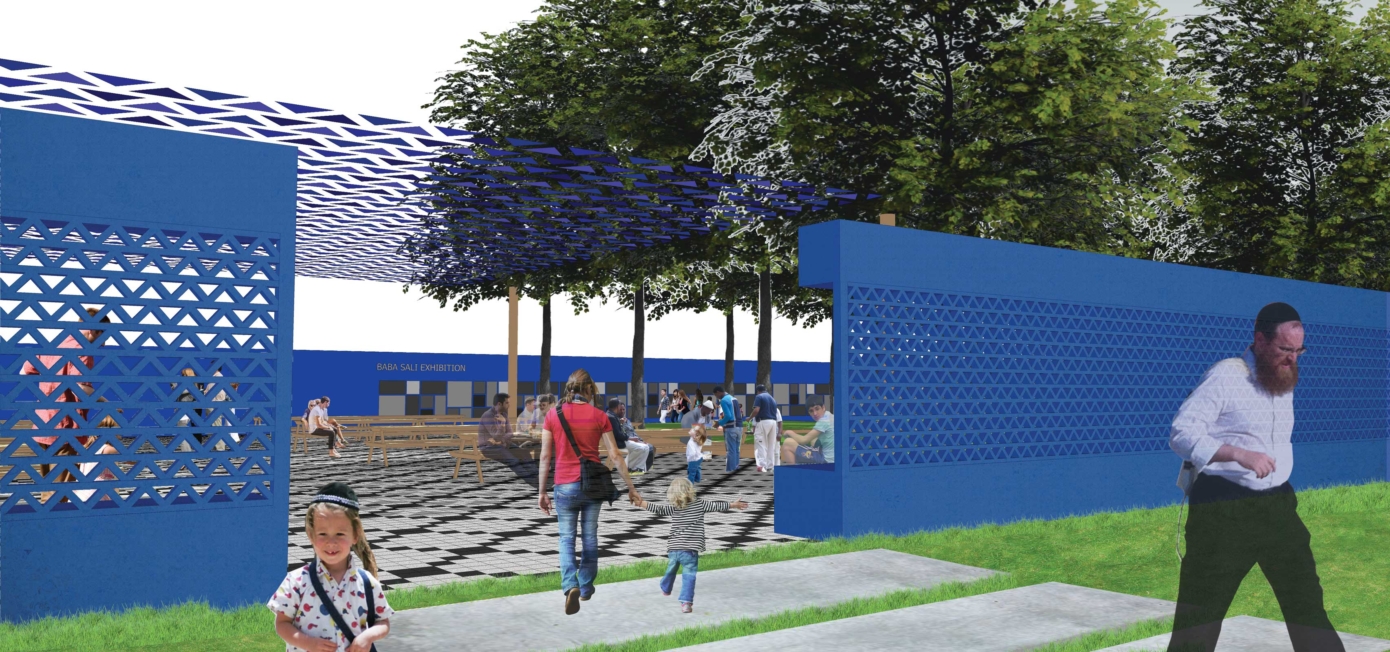
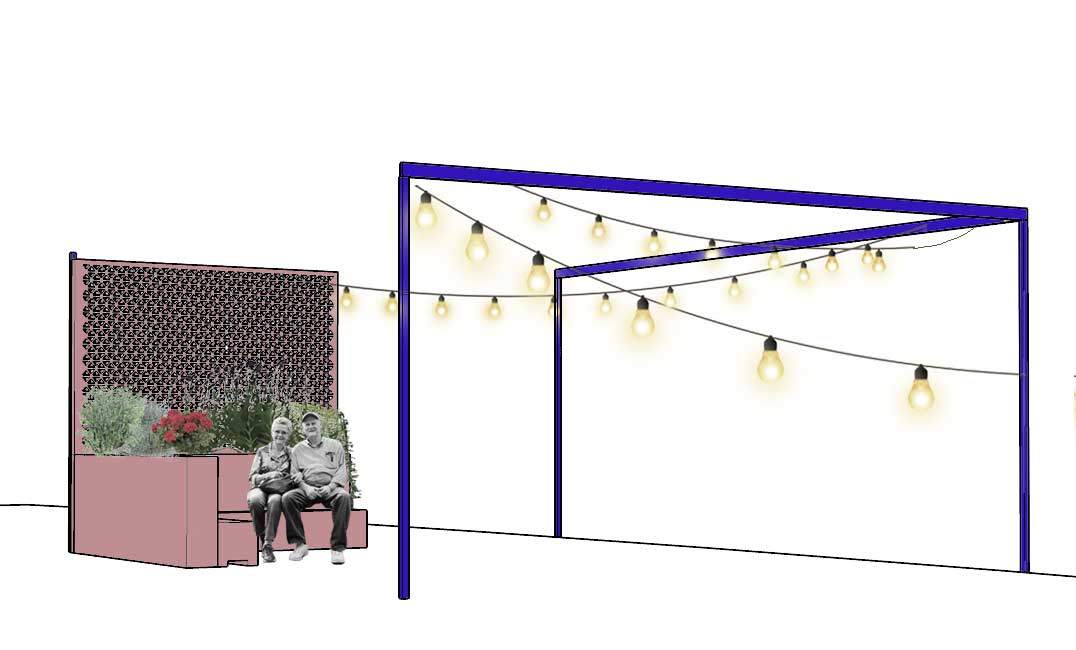
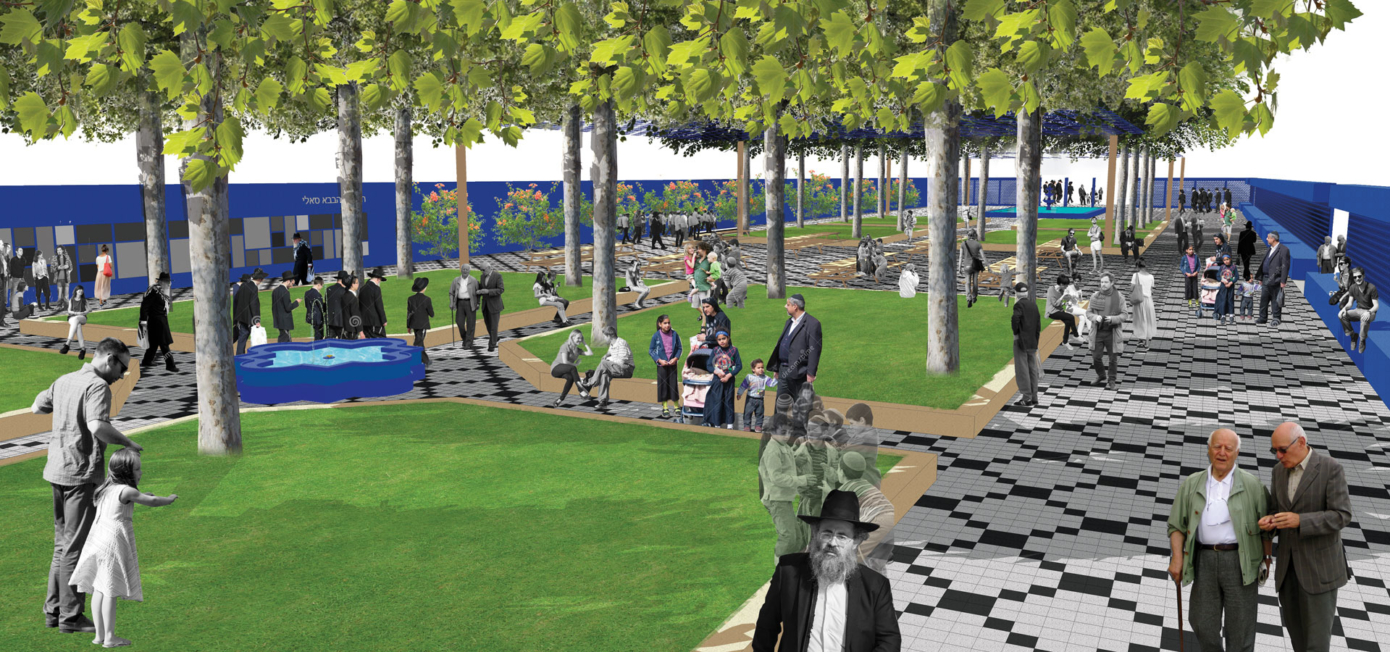
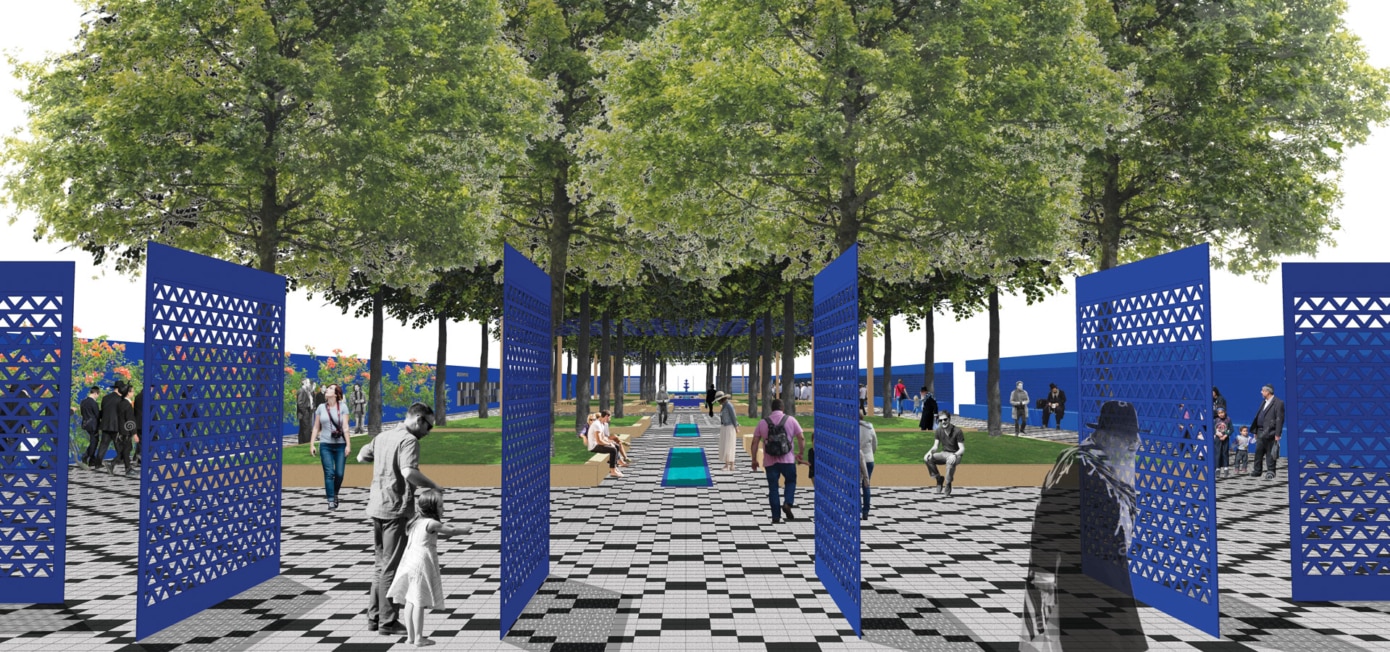
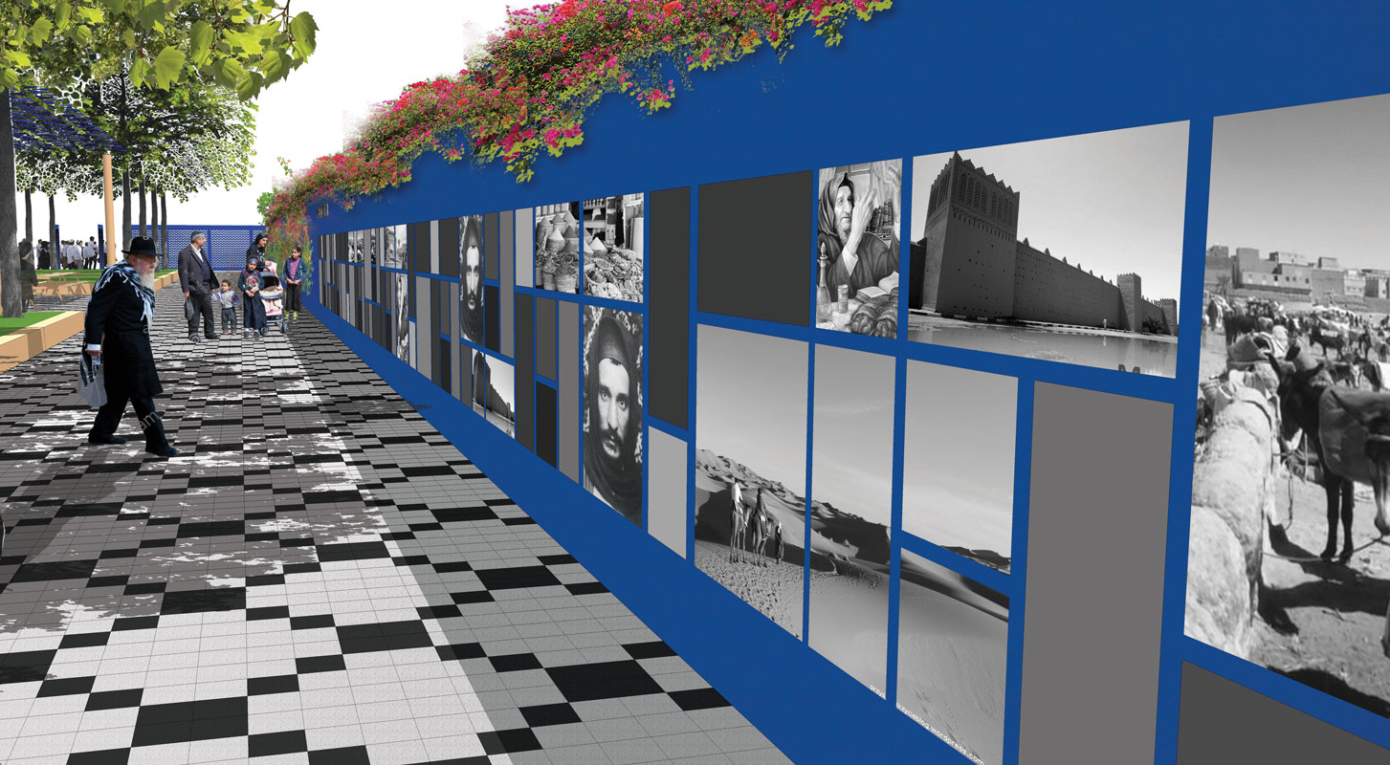
A place of sanctity as a modern space of pilgrimage and its connection to the city
The Spiritual and Cultural Center of Baba Sali
The notion of sanctity as exhibited in the physical space alongside the modern needs of believers and visitors:
The plan offers to newly organize the site according to the already existing infrastructure: the domain of movement, the tree foundations, the site’s symbolism in the shape of aHamsa in order to allow variable spaces for prayer, meeting, celebration, happiness and the functions of everyday life.
The site plan aims to renew the urban space, while creating a firm connection between Baba Sali’s Shrine, the park, city, stream, and the landscape surrounding the new city.
The plan arranges five new public spaces: three gardens – the “Entrance Patio”, the “Garden of Rooms” (which includes the Picnic lots), and the “Hamsa Garden”, and two Avenues: the Palm Boulevard and the Stream Boulevard.
1. Entrance Patio
The Entrance Patio is designed as a series of shaded gardens. On their way to the tomb, visitors pass through an avenue of Argan trees (known as the Tree of Life and one of the most important trees in Morroco), an array of herbal and medicinal plants as well as vegetation aimed at drawing butterflies to the garden. On the avenue’s other end is a wall of Media intended for visiting exhibits – as an external extension to the Heritage Center and one that aims to complete the story of Baba Sali alongside an exhibit of Netivot City.
On the other side of the garden, an object: wall – Mashrabiye – bench, with a number of access points to the parking lot to the South. During the day, this Patio will serve as a formal entrance place – between holy and profane – both for visitors and those coming from the nearby graveyard, as well as for tourists and believers coming to pause, dine or celebrate (Bar Mitzvah, “Brit Milah” Circumcision ceremonies, or burial plot) near the Shrine. In the Center of the garden and alongside the Entrance Patio are water elements and a reflection pool. The Peddler Market (occuring during “Hillula” Day, or the commemorations of the Baba Sali) as well as Holiday markets will occur at this intersection at the entrance to the site.
The palette of colors, materials and the overall design aesthetic are inspired from the East – Sepharadic gardens and Morrocan ones specifically – found at the entrances to holy sites, cultural landmarks and Palaces, as well as the Riad Gardens in Marrakech.
Vegetation:
The Argan Tree – The Tree of Life
Bushes: Medicinal English Lavender, Medicinal Rosemary, Sweet scented Geranium, Artemisia Arborescens (Wormwood Tree), Ruta chalepensis, Lemon Grass, butterfly-attracting Vines, Virginia creeper, Star Jasmine and Bougainvillea Spectabilli.
Paspalum Grass.
2. Hamsa Garden
At the center of the park – an elliptical garden containing a Hamsa hand. The garden preserves the existing geometry and repurposes it as a botanical garden including mini succulents and blossoming cacti. The vegetation planted in the park gives the aura of a prosperous and blossoming Morrocan garden with minimal and efficient water needs, drawing towards it many winged creatures to rest. The garden offers a place to wander, isolate – a place of peace and personal contemplation.
Between the park and the Baba Sali shrine there’s a Palm Tree Boulevard, allowing visitors exiting the Shrine to wander through it on the way to the Hamsa Garden. On the outskirts of the garden there are shadowed grassy lawns for the benefit of children, groups and tourists visiting the space. The colors throughout the garden draw inspiration from Morrocan gardens and the geographical region of Tafilet, in the North-West Sahara.
Vegetation:
Trees: Date Palms, Mexican Fan Palm, Royal Poinciana, Olive Trees, Tamarix Aphylla, Argentine Mesquite Tree and black Poplar Trees.
Bushes: A variety of succulents and cacti: Adenium obesum (Desert rose), Agave Attenuata, Hesperaloe Parviflora, Medicinal Aloe Vera, Aloe Marlothii, Kalanchoe Thyrsiflora, Senecio ‘Himalaya’, Calandrinia Grandiflora and Pelargonium fragrans.
Paspalum grass.
3. Garden of Rooms
On the outskirts of the Hamsa Garden is an external promenade and along it external “accomodation rooms” – places of meeting for couples, singles, families, small groups, or a gathering place for large ones. In these rooms there is modular “furinture” including shading, mashrabiya screens, picnic tables and benches. The furniture system is both vertical and horizontal – which allows it to create isolated “chambers”, seemingly differentiated from one another.
The main parking lot remains mostly in its original state, and will continue to enable a picnic site in the grove. The plan thickens the already existing tree-line skeleton, and changes the land cover around the picnic tables to grass. The renewal of this area will include new furniture, dumpsters, water faucets, BBQ facilities and more – all for the visitor’s pleasure.
The color scheme is inspired by paintings by Jacques Majorelle around Morroco.
Vegetation:
Trees: Royal poinciana, Black Poplar Trees.
Bushes: English Lavender, Medicinal Rosemary, Common Sage,Sweet scented geranium, Artemisia arborescens, Ruta chalepensis, Lemon Grass, butterfly-attracting Vines, and Star Jasmine.
Paspalum grass.
4. Palm Tree Boulevard
Along the main road there is a wide Palm Tree boulevard, including three to five rows of palms, and constituting the facade of the Shrine, the park and the city. Along the boulevard are expansive sidewalks tying the park, the Shrine entrance and the parking lots behind.
Vegetation:
Trees: Date Palm Trees
Paspalum grass.
5. Stream Boulevard
A shaded boulevard extends out of the complex and public square, connecting the Shrine with the stream beyond it, allowing a walk in the natural landscape of the city of Netivot and the cusp of the new one yet to come.
Vegetation:
Trees: Date Palm Trees, Royal poinciana, Argentine Mesquite Tree
Paspalum grass.
MoreNetivot City, Israel
Municipality of Netivot City
